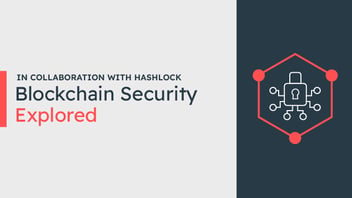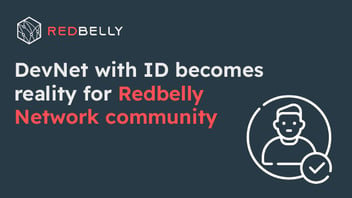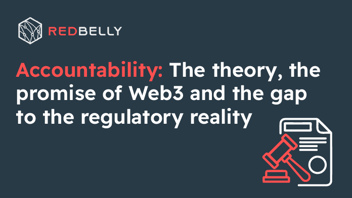At Redbelly, we fundamentally believe that our financial system has increasingly become organised in centralised, unfair ways that embeds information asymmetry. As we’ve discussed previously, in order to maximise the impact that Distributed Ledger Technology (DLT) can have on addressing these issues, we need to ‘bridge’ the gap which exists between what public blockchains and DeFi can do, and what assets in regulated markets need.
In this post, I argue that the foundation of this bridge is effective accountability built on identification and that to successfully build this foundation, we need to embed identity into the core infrastructure of the network itself.
Being able to identify, or have confidence in knowing who you’re transacting with is crucial in order for any group of transacting parties to hold each other accountable for their actions. When considering the sheer number and scale of cases of fraud and stolen assets that continue to pervade the blockchain sector, the need for genuine accountability should be clear, particularly when considering the industry wide desire for mainstream adoption of the technology. This is especially true when bearing in mind the untapped markets of real-world assets which are generally defined by their ties to a backstop of a legal system in a particular jurisdiction. For the legal system to be able to operate effectively, it needs to be able to identify individuals and other entities in order to hold them accountable.
As governments and regulatory bodies begin to look at not only digitally native assets, but the infrastructure that they sit on as well, it is going to be increasingly important for the long term viability of that infrastructure to be able to allow for the identification of network participants if they want to host use cases that will ultimately and inevitably fall under the purview of regulators.
By being able to link real world identities with a digital identity used to transact, a DLT system can more easily facilitate regulatory compliance for its participants as well as help protect against fraud and other malicious activity that may otherwise occur on the network. This is particularly important in cases where assets of significant, real world value are being exchanged.
In short, if you want to play inside the rules (however flawed they may sometimes be), you’re going to have to be able to be identified.

These ideas raise important questions regarding the need to balance transparency and privacy when identifying yourself to counterparties. The ability for DLT to distribute custody to the edges of the network combined with the revolutionary advances in zero-knowledge cryptography and the establishment of verifiable credential schemas makes it possible to prove things to other network participants without having to reveal the contents of that information.
Currently, the ability to leverage these technological advances in the context of transacting on a blockchain with a known counterparty is severely limited. Often, it is only able to be done by combining a disparate series of ad-hoc, layer 2 solutions. Inevitably, these solutions add cost and friction to the application building process by requiring a bespoke token to operate. It is worth noting, too, that for each application on a particular network to access the benefits of these technologies (i.e. identifying participants to facilitate regulatory compliance and ensure accountability), they each have to spend the time and cost to integrate and operate each layer 2 solution.
Fundamentally, this is why Redbelly Network is embedding digital identity directly into the heart of its infrastructure. This means that the basis for accountability is built directly into Redbelly’s layer 1 and therefore, by default, the ability to identify network participants is available to all use cases rendering them more readily able to facilitate regulatory compliance.
In addition, by baking digital identity into the heart of our layer 1, we reduce the marginal cost of establishing and using that digital identity drastically towards zero because the infrastructure is shared amongst all network participants in an analogous way to how typical public blockchain systems allow network participants to share the compute and storage costs of programming and executing logic on a distributed state machine.
No longer does every application built on the network have to pay to onboard users to a siloed and bespoke digital identity system. They can leverage a user’s established digital identity at a fraction of the cost.

In future posts, we’ll dive into Redbelly’s approach to digital identity in more detail before ultimately exploring the other foundations of our ‘bridge’; performance, pooling and issuance, and trading.
About the Author: Matt is the Head of Product at Redbelly Network. He is passionate about leveraging distributed ledger technologies to scale the impact of solutions to solve super wicked problems. Matt has been working in startups and product management for more than 7 years turning product ideas into reality. He has a background in physics, philosophy, climate science and renewable energy.






